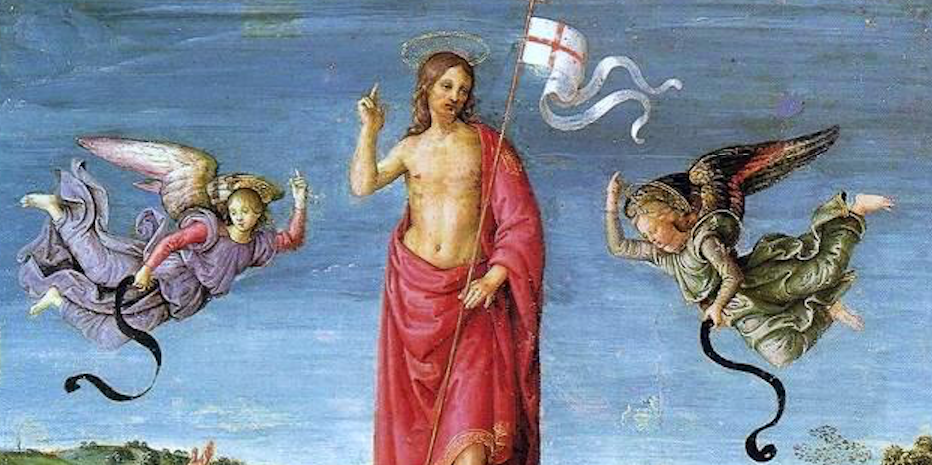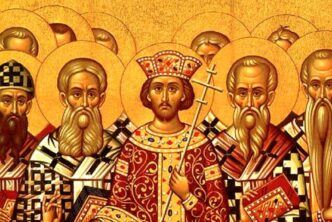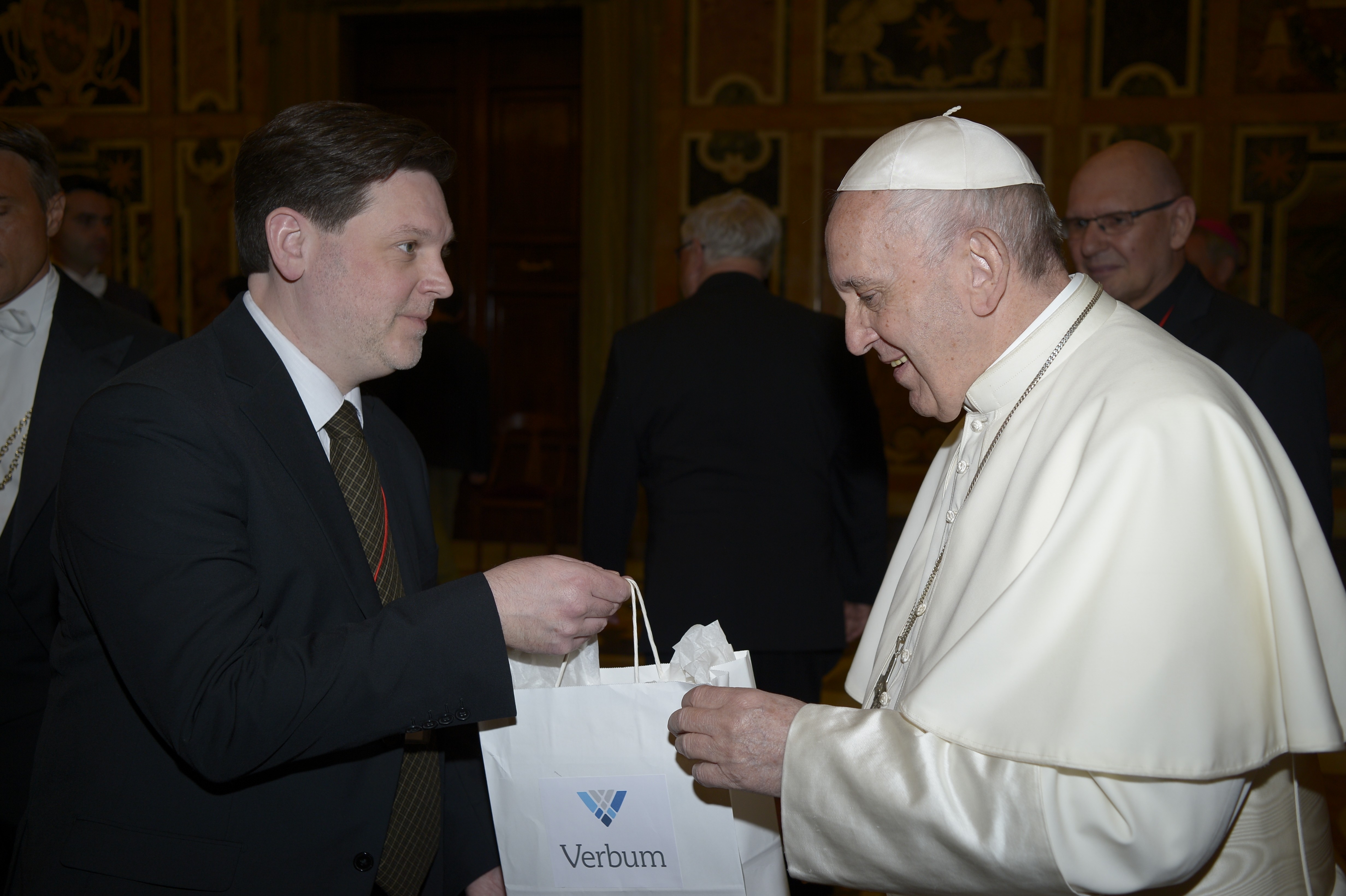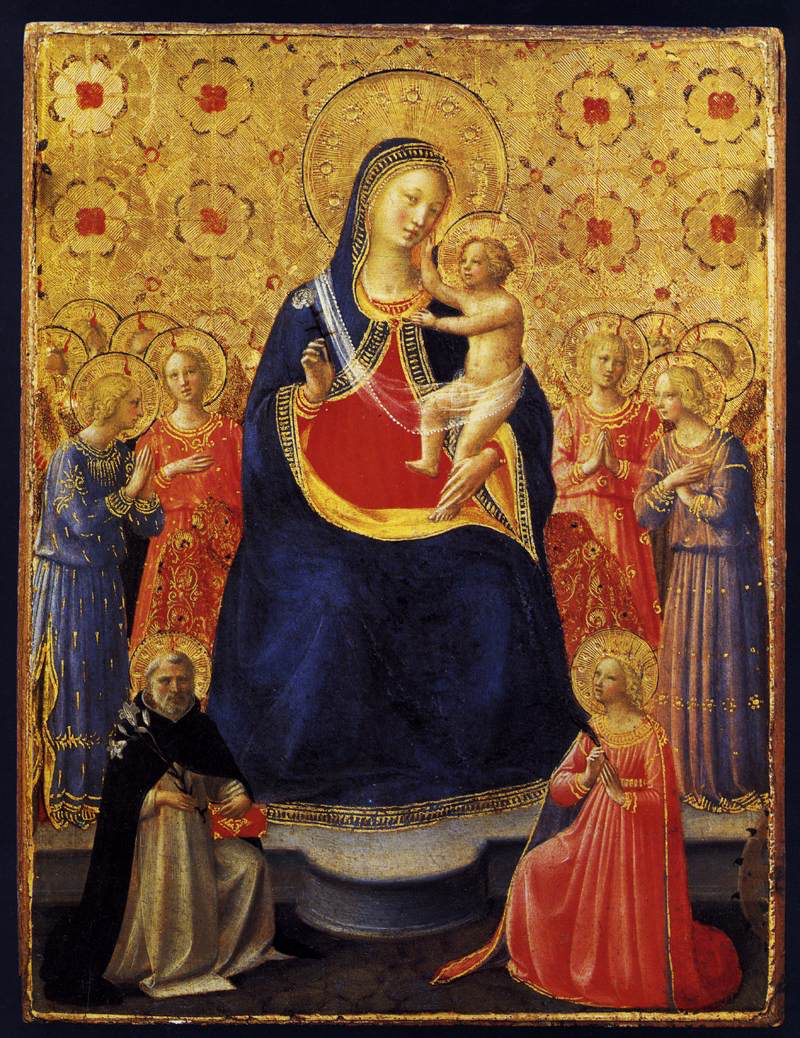
The Resurrection of Christ, one of Raphael’s earliest known works, is packed with symbolic elements intended to communicate theological truths. Here are some highlights:
- The triumphant Christ is purposefully center stage and carries his standard blowing in the wind. The white represents peace, purity, and innocence; the red cross, his blood.
- His red robe, also symbolic of blood, is embroidered with gold along the edge—a device Renaissance painters used to designate Jesus post-resurrection. Christ hovers in the air above his tomb, emphasizing his divinity and redeeming work.
- The river at the base of the hills is a reminder of baptism, and that in baptism believers participate in Christ’s death and resurrection.
- In the foreground on the left, at the foot of the sarcophagus, is a slithering snake, which signifies that Christ’s resurrection has defeated Satan—he no longer holds any power (Genesis 3:14–15).
- The small, white crane at the center-right of the painting symbolizes three things:
-
- Endurance, because of the crane’s long migration patterns
- Resurrection, because cranes reappear each spring
- Satan’s defeat, because cranes are masters at killing snakes
- Clear, even light rises over the hill to indicate that night (death) is over.
- Three women walking up the path to the grave are a visual presentation of Mark 16, when Mary Magdalene, Mary the mother of James, and Salome took spices to anoint Jesus’ body.
- Four guards at the four corners—two fallen and two standing—are drawn from Isaiah 11:12 when the resurrected Christ will “lift up a standard for the nations and assemble the banished ones of Israel and will gather the dispersed of Judah from the four corners of the earth.”
- The three squares on the front of the sarcophagus symbolize the Trinity, and the two angels who frame Jesus, clothed in rich, colored robes, are present to proclaim his resurrection.

He will raise a banner for the nations and gather the exiles of Israel; he will assemble the scattered people of Judah from the four quarters of the earth. (See also: Matthew 28:1–10, Luke 24:1–12, Mar 16:1–8, and John 20:1–10.)
Artist: Raphael
Year: 1499–1502
Location: Sao Paulo Museum of Art, Sao Paulo, Brazil
***
Read more about this piece and browse other sacred art in the Verbum app.






